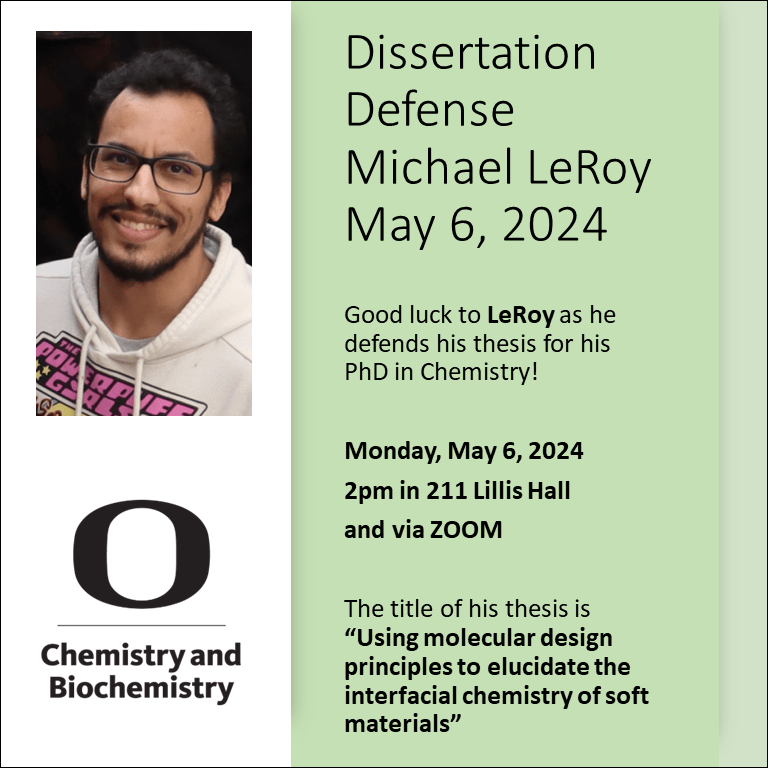
Chemistry and Biochemistry Department
Upcoming Thesis Defense
Michael LeRoy
Brozek Lab
Monday, May 6. 2024
2pm in 211 Lillis Hall and via Zoom
contact Chemistry and Biochemistry office for Zoom link
Thesis title and abstract:
“Using molecular design principles to elucidate the interfacial chemistry of soft materials”
Soft materials are a class of materials including colloids, polymers, DNA, and proteins. Due to their organization on the mesoscopic length scales they exhibit a wide variety of properties such as self-assembly and response to external stimuli. This has led soft materials to be employed in a wide array of applications ranging from catalysis, electrochemistry, and membrane technologies. Ionic liquids and metal-organic framework are two distinct classes of hybrid organic-inorganic soft materials, that are well studied and used as filler materials for polymer membrane separation technologies. However, a current challenge is understanding how the interfacial chemistry between these filler materials and polymer impacts membrane structures and properties. In this dissertation, molecular chemistry is used to explore how mesoscopic properties give rise to those found in the bulk of ionic liquids and nanoscale metal-organic frameworks respectively.

 Department of Chemistry and Biochemistry
Department of Chemistry and Biochemistry
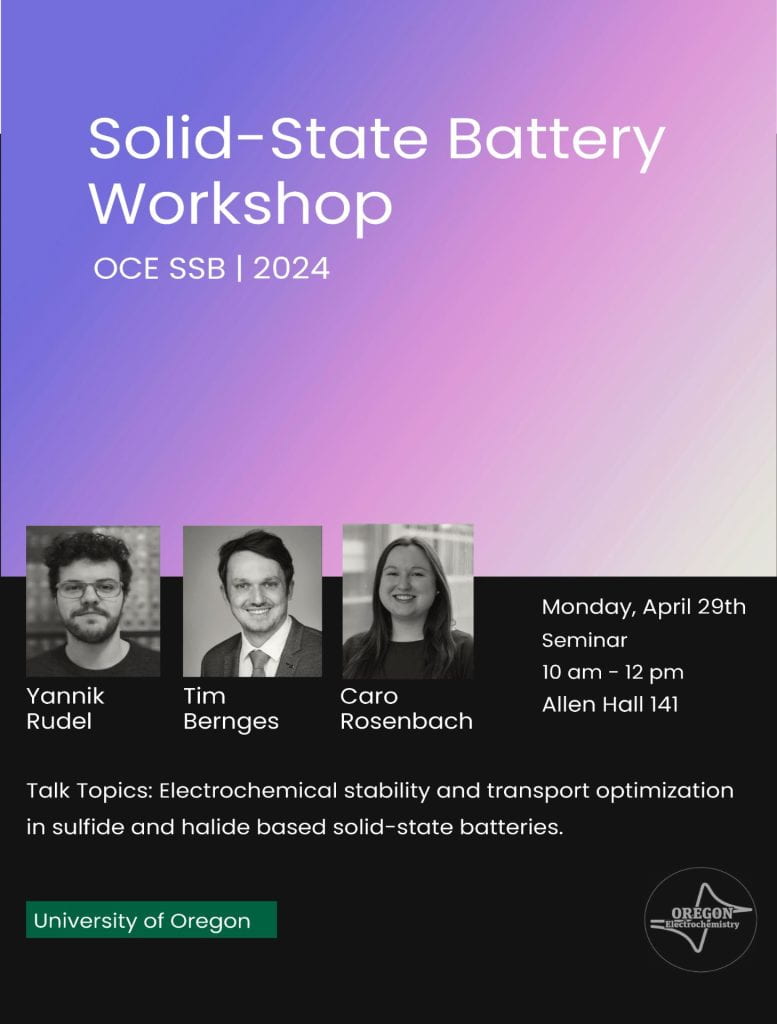
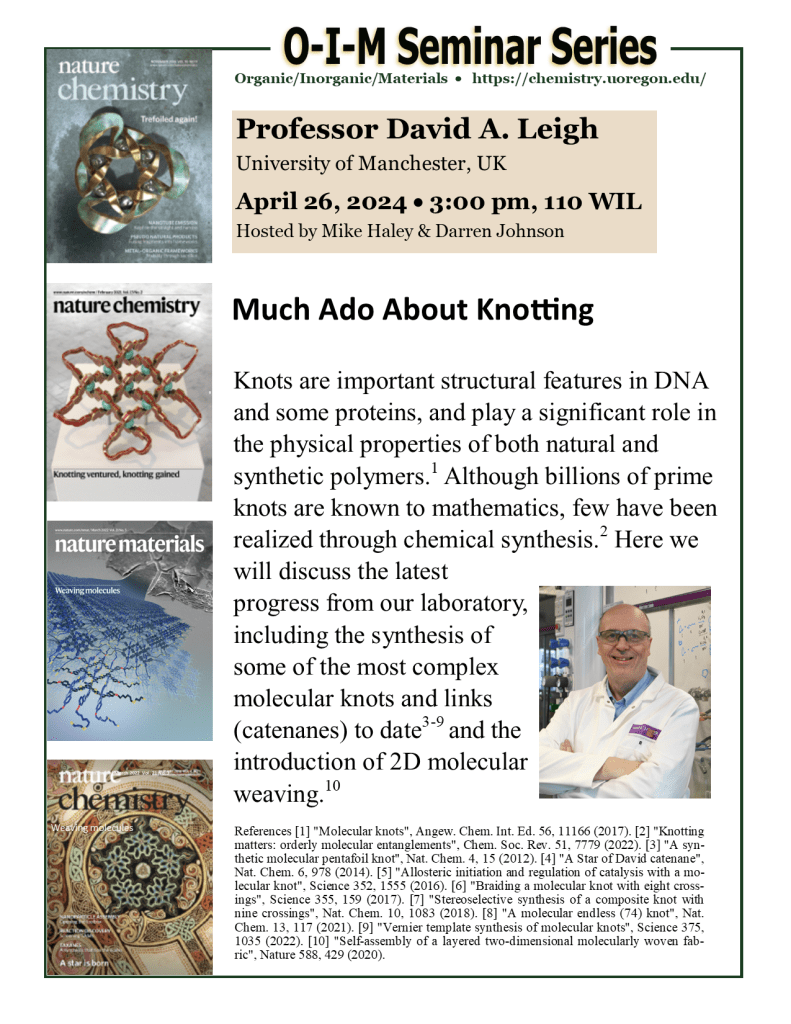 Organic-Inorganic-Materials Chemistry Seminar Series
Organic-Inorganic-Materials Chemistry Seminar Series Organic-Inorganic-Materials Chemistry Seminar Series
Organic-Inorganic-Materials Chemistry Seminar Series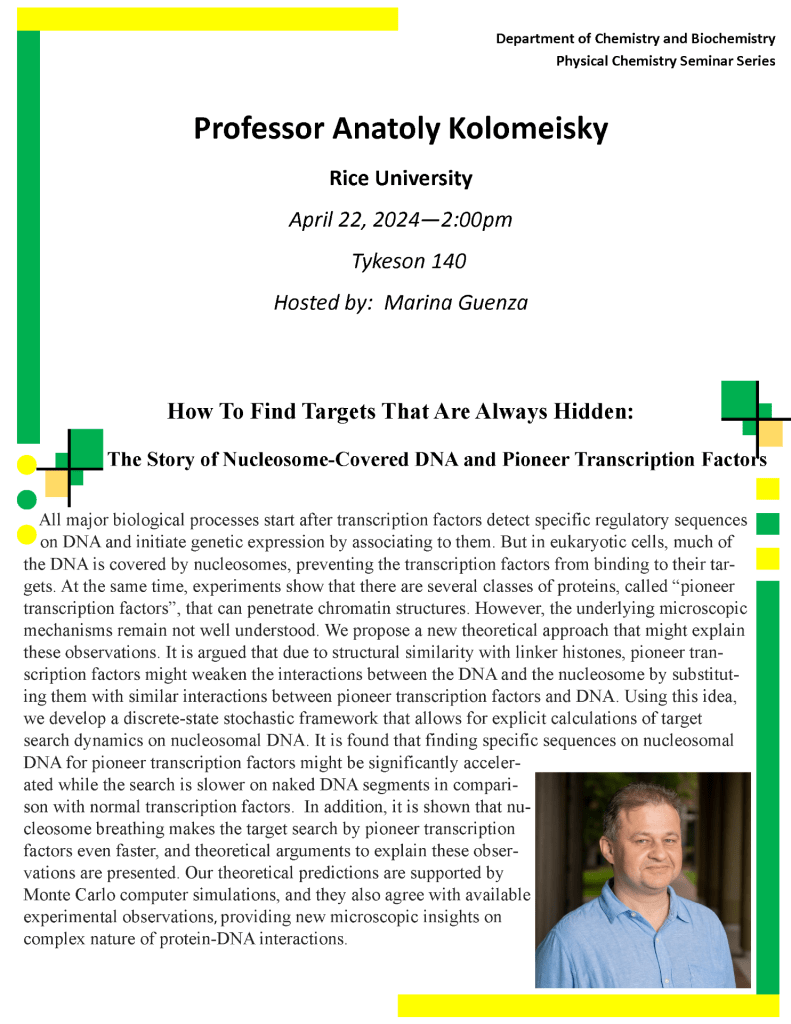
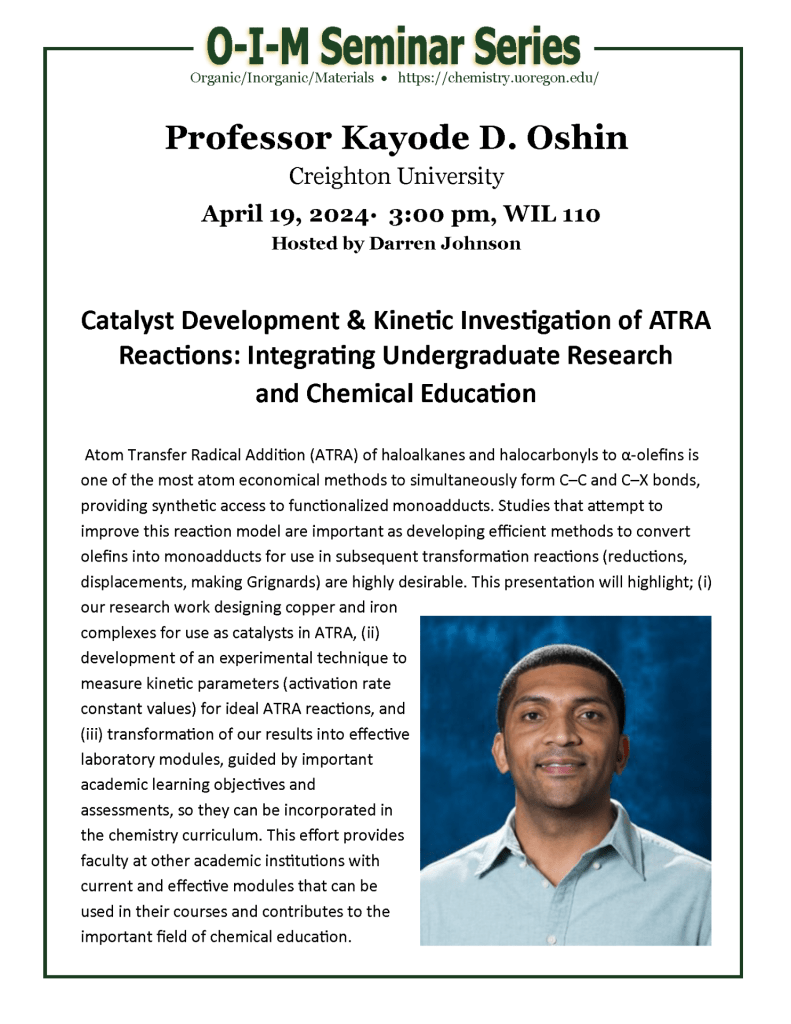 Organic-Inorganic-Materials Chemistry Seminar Series
Organic-Inorganic-Materials Chemistry Seminar Series
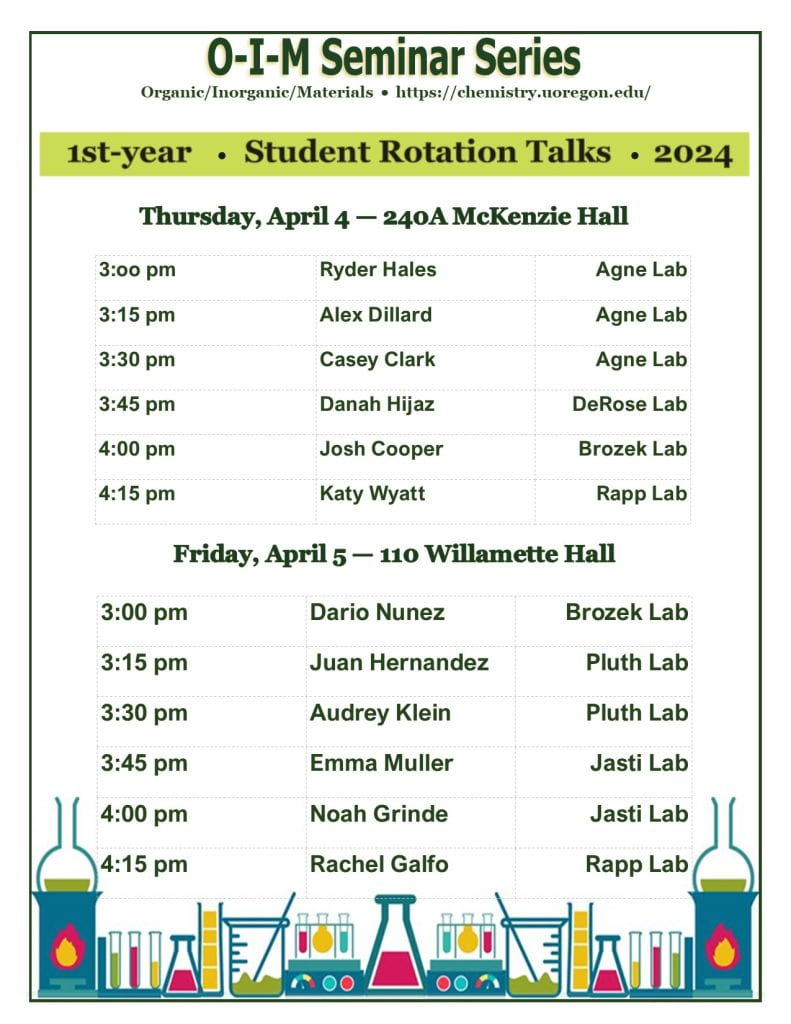 Organic-Inorganic-Materials Seminar Series
Organic-Inorganic-Materials Seminar Series